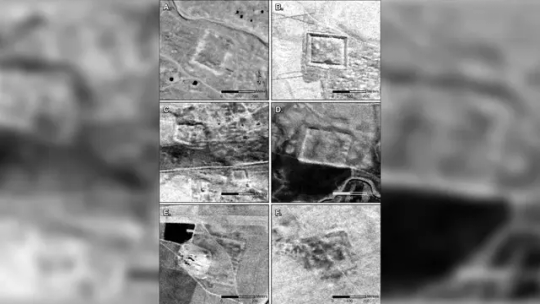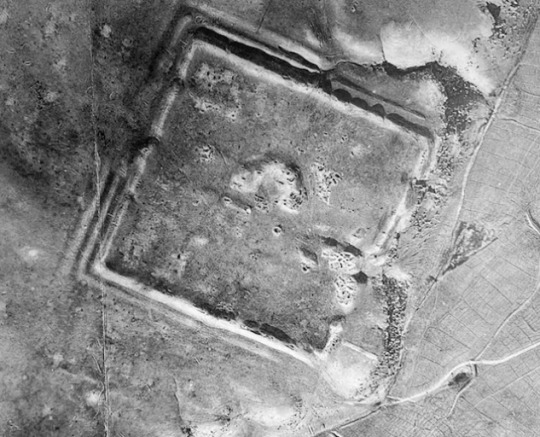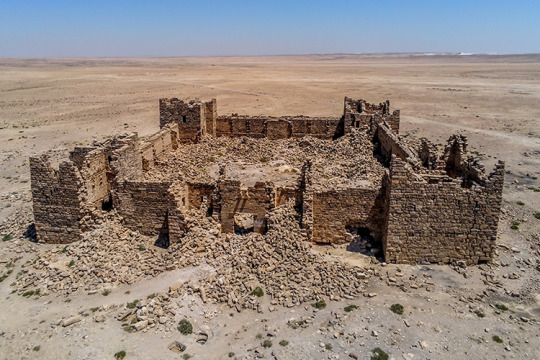#qasr
Explore tagged Tumblr posts
Text

Qasr El Nil Bridge in Cario, Egypt
British vintage postcard
#postkaart#Qasr#photo#postcard#photography#postal#British#Bridge#sepia#postkarte#briefkaart#vintage#carte postale#ansichtskarte#Egypt#ephemera#historic#Cario#tarjeta
8 notes
·
View notes
Audio
Sheherazaad’s Qasr
#sheherazaad#qasr#erased tapes#music#folk#pop#classical#chamber music#chamber pop#contemporary folk#hindustani classical music#alternative pop#acoustic#bandcamp
3 notes
·
View notes
Text
qasr sultanate yuusha 👀

i haven’t played the book 7 update on twsten yet but i’ve been forgetting to share this for about (squints at calendar) … 9 months since it came out on twstjp—
#girl ur purple is clashing with the outfits' colors hhh#i remember someone pointing out that kalim and jamil's color palettes for their qasr sultanate fits are inverted colors of each other#which i think is pretty neat#[—✦-#twst#twisted wonderland#twst book 7#twst book 7 spoilers#book 7 part 9#twst art#twst fanart#twst yuu#twst yuusona#(💜) yuusha tala#-✦—]#been digging through old art lately#and omg there's stuff i completely forgot existed HAHA#both posted and not posted here#(✧) my art
99 notes
·
View notes
Text

Spy Satellite Photos Reveal Hundreds of Long-Lost Roman Forts
Declassified photos captured by United States spy satellites launched during the Cold War have revealed an archaeological treasure trove: hundreds of previously unknown Roman-era forts, in what is now Iraq and Syria.
Many of those long-lost structures may be gone forever at this point, destroyed or damaged over recent decades due to agricultural expansion, urban development and war. Nevertheless, the discovery of the forts’ existence challenges a popular hypothesis established in the 1930s about the role of such fortifications along the ancient Roman Empire’s eastern border, researchers reported Wednesday in the journal Antiquity.
Based on the satellite views, the high number of forts and their widespread distribution hints that the forts may not have been erected to keep enemies out, as the decades-old theory suggested. Rather, the structures were likely built to ensure safe passage for caravans and travelers along routes that saw plenty of nonmilitary traffic. These forts, according to the study authors, were outposts and havens, not hostile barriers.
High-resolution images analyzed in the new study were taken during flyovers by multiple satellites belonging to two US military programs: the Corona Project (1960 to 1972) and Hexagon (1971 to 1986). Corona’s images were declassified in 1995, and Hexagon’s photos were released to the public in 2011.
Images from Hexagon and Corona are invaluable for archaeologists because they preserve snapshots of landscapes that have since undergone significant disruption, said lead study author Jesse Casana, an archaeologist and professor in the department of anthropology at Dartmouth College in New Hampshire.
“Agriculture and urbanization have destroyed a lot of archaeological sites and features to a shocking degree,” Casana said. “This old imagery allows us to see things that are often either obscured or no longer extant today.”


Spy satellite photos vs. the Poidebard survey
Satellite images are especially helpful for searches across the northern part of the Fertile Crescent in the Middle East — from the eastern coast of the Mediterranean to western Iran — because of the area’s archaeological importance and high visibility of the ground in photos, Casana added.
The research team pored over the images for signs of Roman forts, which have a distinctive square shape and walls that usually measure about 164 to 262 feet (50 to 80 meters) long. The scientists began their search using reference maps from an aerial survey of the region conducted in the 1920s and 1930s by French archaeologist and Jesuit missionary Father Antoine Poidebard. That survey was among the first to photograph archaeological sites from the air, and in 1934 Poidebard reported finding 116 Roman forts.
It was an unprecedented achievement. But nearly a century later, mapping Poidebard’s forts to satellite photos was challenging. Because his map wasn’t large-scale, it contained numerous spatial errors, Casana said. Poidebard also did not provide names or numbers for most of the forts he found, identifying them instead by their proximity to geologic features.
Those forts were aligned north to south along what was once the easternmost boundary of the Roman Empire, according to Poidebard. This arrangement, he claimed, was surely intended to guard against invaders from the east.
But Poidebard’s survey provided only a partial view of Rome’s ancient infrastructure, the researchers found. What he overlooked — and what the satellite photos revealed — was that the north-to-south line of 116 forts was actually only a narrow sliver of a cluster spreading from east to west and containing 396 fortified structures.
The forts spanned approximately 116,000 square miles (300,000 square kilometers), “extending from Mosul, on the Tigris River in Iraq, through Ninawa province, across the Khabur and the Balikh valleys, continuing to the semi-arid plains west of the Euphrates River, leading to western Syria and the Mediterranean,” according to the study.

Oases of safety for ancient Rome
When the archaeologists performed a second survey of an image subset, they found 106 more fortlike structures, hinting that further investigations will yield many more Roman forts. Based on excavations of other Roman sites in the region, the scientists estimated that the forts were built between the second and sixth centuries.
While Poidebard’s row of forts along the Roman Empire’s eastern front looked like a military fortification, this new evidence suggested that the forts collectively served a different purpose. Rather than presenting an impassable wall on a violent frontier, they provided oases of safety and order along well-traveled Roman roads.
Borders in this world “were places of dynamic cultural exchange and movement of goods and ideas,” not barriers, Casana said. And perhaps that perspective holds a lesson for the modern era, he added.
“Historically, as an archaeologist, I can say that there have been many attempts by ancient states to build walls across borders and it has been a universal failure,” Casana said. “If there’s any way that archaeology contributes to modern discourse, I would hope it is that building giant walls to keep people out is a bad plan.”
By Mindy Weisberger.




#Spy Satellite Photos Reveal Hundreds of Long-Lost Roman Forts#unknown Roman-era forts#iraq#syria#Roman Empire’s eastern border#ancient artifacts#archeology#archeolgst#history#history news#ancient history#ancient culture#ancient civilizations#roman history#roman empire#Qasr Bshi
50 notes
·
View notes
Text


He took me to 100 ☹️ but at least I still have some keys left.
But anyways GRAAAAH this card is so pretty!! 🩵🤍🩵🤍 Kalim is one of my top favs next to Savanaclaw 🥰

Also got dorm Sebek around the halfway mark. This is the second time an ssr of his has shown up while I was trying to pull for someone else lol
#sincerely praying that platinum ruggie will be nice and come home early for his bday 😭🙏#twst#twisted wonderland#kalim al asim#qasr sultanate kalim
5 notes
·
View notes
Text

Geologists in the mud of Mesopotamia, Um Qasr, Iraq, sixties
5 notes
·
View notes
Text

Qasr Harranah, Jordan
(photo by me)
5 notes
·
View notes
Text
biggest faggot in the parking lot award
2 notes
·
View notes
Text

#acmirage#assassin's creed#assassin's creed mirage#qasr salih#karkh#ubisoft#photomode#virtual photography#gamingedit#gaming photography
3 notes
·
View notes
Text

Qasr El Nil market in Cairo, Egypt
French vintage postcard, mailed in 1904
#tarjeta#1904#postkaart#sepia#carte postale#qasr el nil#ansichtskarte#cairo#mailed#briefkaart#photo#photography#postal#postkarte#market#vintage#french#postcard#historic#egypt#qasr#ephemera
9 notes
·
View notes
Text
Trump’s UAE Welcome: The Cultural Significance of the Ayyala Dance
#Abrahamic Family House#Abu Dhabi#Ayyala dance#Burj Khalifa#cultural diplomacy#cultural performance#Donald Trump#Emirati heritage#hospitality#Qasr Al Watan#Sheikh Mohamed bin Zayed#tradition#UAE#UNESCO#unity
0 notes
Text
50 pulls for qasr kalim….. no luck….. only the WRONG KALIM— 💥💥💥

#[—✦ gaming#:twst gacha#i need to stop bc i REALLY want fairy gala ortho 😭#better luck next time qasr sultanate kalim 💢💢💢#okay this is the sign for me to sleep (debatable)
39 notes
·
View notes
Text

0 notes
Text




IT IS HIM!!!!
#//I would let this man’s ramble my ear off abt gargoyles; yessir#//My glorious king#//My specialest boi jdndn#✮┆ ( .ooc. );#//The three free ten pulls I had saved are gone now#//But SO FUCKEN WORTH IT LMAOOOO#//I CAN SAVE FOR QASR KALIM AND FAIRY ORTHO LETS GOOOOO#//V and Ruggie are gonna have to double up next year during rerun jfbfn#//THIS is how you kick off Aut|sm Awar.eness Month LMAOOOO#//Censored it to keep out of main tags; BUT YEAH DBJSHSBSB
1 note
·
View note
Text
Lebanese president orders army to respond to fire from Syria - The Times of India
File photo: Lebanese president Joseph Aoun (left) in a meet with Syria’s interim President Ahmad al-Sharaa. (Picture credit: AP) BEIRUT: Lebanese President Joseph Aoun said Monday that his country’s forces would respond to incoming fire from neighbouring Syria that authorities said had killed a child.Clashes broke out late Sunday at the Syrian-Lebanese border, with the new authorities in…
#child killed in shelling#Hezbollah#Lebanese army response#Lebanese President Joseph Aoun#Lebanon security measures#Qasr village incident#smuggling gangs in Lebanon#Syria Lebanon border clashes#Syrian authorities#Syrian shelling
0 notes
Text
Qasr Al Watan: Unveiling the History of a Royal Palace
Qasr Al Watan Palace has been very unique and appealing in terms of the experiences of luxury and history. This marvelous royal palace in Abu Dhabi is visitor- friendly and anyone interested in architectural designs, history, culture and governance of the UAE could visit the palace. Every detail of the architecture in the Great Hall, every piece of art in the exhibition galleries tells a story of the UAE’s history and vision for the future. It’s up to you if you are mesmerized by the collection of manuscripts in the library or fascinated with the dome over your head; this palace tour would make you travel through the history of the Emirates.
To prepare for your visit it is advised that you order Qasr Al Watan tickets online in advance, especially when visiting during the busy months. The Qasr Al Watan Ticket price is relatively cheap, affordable by most travelers, and it costs a little more depending on age and other activities such as guided tours. It provides full access to the palace’s main ornamental garden, as well as other exhibits that are designed to introduce guests to the culture of the United Arab Emirates and tell the history of the country. In that case, let me assure you, history lovers and other guests of the UAE, that Qasr Al Watan is something to see.

A sneak preview of the Royal Heritage of UAE
Qasr Al Watan or the Palace of the Nation is a comparatively young landmark of cultural tourism, which was opened to the public in 2019. The palace is used by the UAE President, hosts many official governmental meetings, and stands as an impressive example of architectural mastery of the UAE history, present, and future. Having received its architectural inspiration from the domes and the grand halls of the buildings, as well as intricate designs, Qasr Al Watan embodies the values of the UAE, such as unity, respect for traditional culture and heritage, and an ambitious vision for the future.
This architectural wonder is situated in the Presidential Palace complex and contains both official and art and cultural facilities. It was designed to become a center where people could learn more about the history of the country and see how the UAE turns into a developed state.
Exploring the Mystery of Architecture and Design
It is a striking venue that broke the ground in 2015, and it has elements of Islamic and Arab architecture and combines modern and tradition. First of all, the richness of the decoration impresses visitors, starting with the main cupola, one of the largest in the world, towering above at 60 meters. The word ‘Arabic’ is used for the calligraphy, arches, and stunning mosaics on the walls make it look traditional and at the same time modern.
Even the interior of the building is interesting and the rooms are gilded with gold, marble and precious stones. The palace also has an architectural sense of depicting commitment to excellence and tradition of the UAE where every corner of the building has a story to tell about the country. Not only crown dining rooms but even corridors are adorned with stunning work, and all the themed areas are designed to reflect the history and dreams of the nation.

The Culture and History
Beyond beauty of architecture, Qasr Al Watan of the UAE has immense social significance in the process of maintaining its pride and cultural heritage. There are several exhibition places in the palace that exhibit the cultural history of the United Arab Emirates. One of the most beautiful structures in the palace is the “Qasr Al Watan Library” that hosts a plethora of manuscripts, books, and artifacts that depict the history of the Arabian region.
The palace also includes tangible and digital installations that give the visitors a general idea of how the UAE is being governed, its culture and its vision. The “Spirit of the Union” is an exhibition in honor of the establishment of the UAE and the “Emirates of the Union” is an exhibition that focuses on the emirates and their role and achievement in the success of the country. These exhibitions offer a profound and spiritual experience and make people comprehend where the UAE has come from and where it is going.
A Peep into the Royal Palace
What most of the visitors to Qasr Al Watan get to see is how the royal family of the UAE lives. The palace provides a number of opportunities to look at the interior that represents a personal sphere of the royal family, their bedrooms, offices, and other rooms. Apart from being a home of the ruling royal family, the palace is used for sittings, receptions, functions, and state banquets.
It is, a showpiece not only in terms of aesthetics but also in terms of its utility, which is to serve as a venue for all major political and government activities. Islamic architecture with the incorporation of the modern technologies is ideal for these high level meetings.
Tourist Attractions at Qasr Al Watan
The Great Hall: The main part of the palace with the high dome and fine carving on walls and ceilings. The Great Hall is used for official ceremonies and it represents strong and united UAE.
The Gardens: Flower gardens and greenery around the palace enable one to have a look at the outer part of the palace. People can walk quietly while admiring the trees and ponds that are present around the park.
Exhibition Galleries: These galleries give an insight of the cult, political and historical dimension of the UAE accompanied with royal collections and papers.
The Palace’s Library: Book lovers cannot afford to miss the Qasr Al Watan Library because it houses unique manuscripts and publications of importance within the UAE’s history.
Visiting Qasr Al Watan: What You Need to Know
This is a real palace that is currently open for the public and people can can see the interior and learn more about its history on a guided tour. The palace presents numerous educational programmes and activities, which makes it rather appropriate for tourists, schools, and everyone who wants to learn more about the UAE.
For anyone who is thinking of paying the palace a visit, then one should dress appropriately since it is a royal palace. These include; the clothing should not be revealing and tight fitting, no shorts or sleeveless tops are allowed. The palace is also situated in a strategic area within Abu Dhabi and there are many companies that organize trips to Qasr Al Watan for their clients.
Conclusion
It is not just a palace of the emir; it is a symbol of the UAE’s history, its desire to share that history with the world, and the UAE’s future. The visit of this great palace can help to learn more about traditions, art, architecture and even government of the United Arab Emirates. Regardless of your interest in architecture, history or culture trips, Qasr Al Watan is a place that you’ll always remember and which will give you more insights into the history of the Emirates.
For tourists in Abu Dhabi, it is an exciting destination, and one which gives insight to the luxurious lifestyle within the UAE, and its history.
0 notes